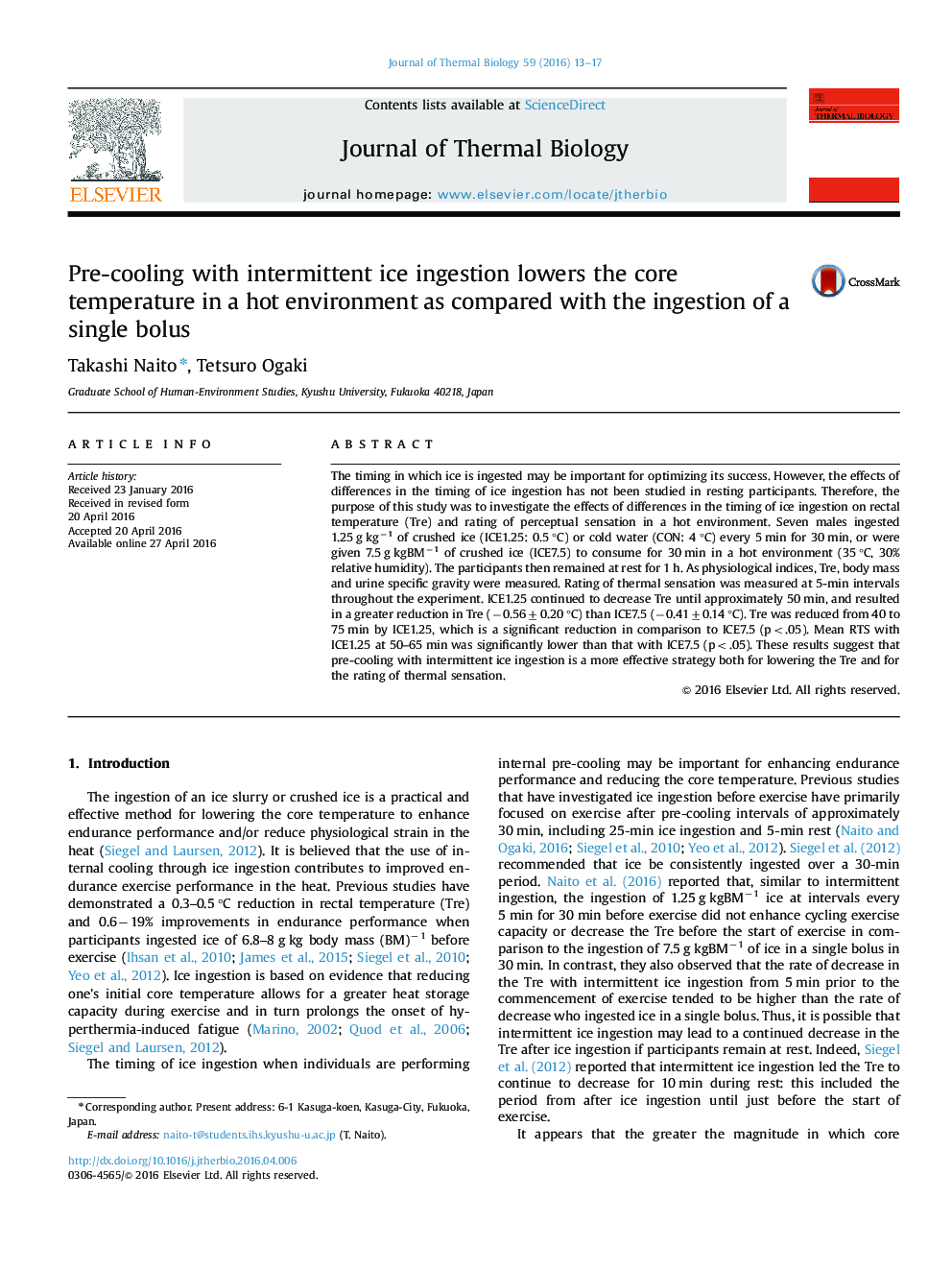| Article ID | Journal | Published Year | Pages | File Type |
|---|---|---|---|---|
| 2842672 | Journal of Thermal Biology | 2016 | 5 Pages |
•Intermittent ice ingestion continued to decrease Tre until approximately 50 min and resulted in a greater reduction in Tre.•Intermittent ingestion of ice was lower in Tre than ingestion of ice in a single bolus from 40 to 75 min.•Intermittent ice ingestion may be a practical and effective method to cool the body before exercise in a hot environment.
The timing in which ice is ingested may be important for optimizing its success. However, the effects of differences in the timing of ice ingestion has not been studied in resting participants. Therefore, the purpose of this study was to investigate the effects of differences in the timing of ice ingestion on rectal temperature (Tre) and rating of perceptual sensation in a hot environment. Seven males ingested 1.25 g kg−1 of crushed ice (ICE1.25: 0.5 °C) or cold water (CON: 4 °C) every 5 min for 30 min, or were given 7.5 g kgBM−1 of crushed ice (ICE7.5) to consume for 30 min in a hot environment (35 °C, 30% relative humidity). The participants then remained at rest for 1 h. As physiological indices, Tre, body mass and urine specific gravity were measured. Rating of thermal sensation was measured at 5-min intervals throughout the experiment. ICE1.25 continued to decrease Tre until approximately 50 min, and resulted in a greater reduction in Tre (−0.56±0.20 °C) than ICE7.5 (−0.41±0.14 °C). Tre was reduced from 40 to 75 min by ICE1.25, which is a significant reduction in comparison to ICE7.5 (p<.05). Mean RTS with ICE1.25 at 50–65 min was significantly lower than that with ICE7.5 (p<.05). These results suggest that pre-cooling with intermittent ice ingestion is a more effective strategy both for lowering the Tre and for the rating of thermal sensation.
